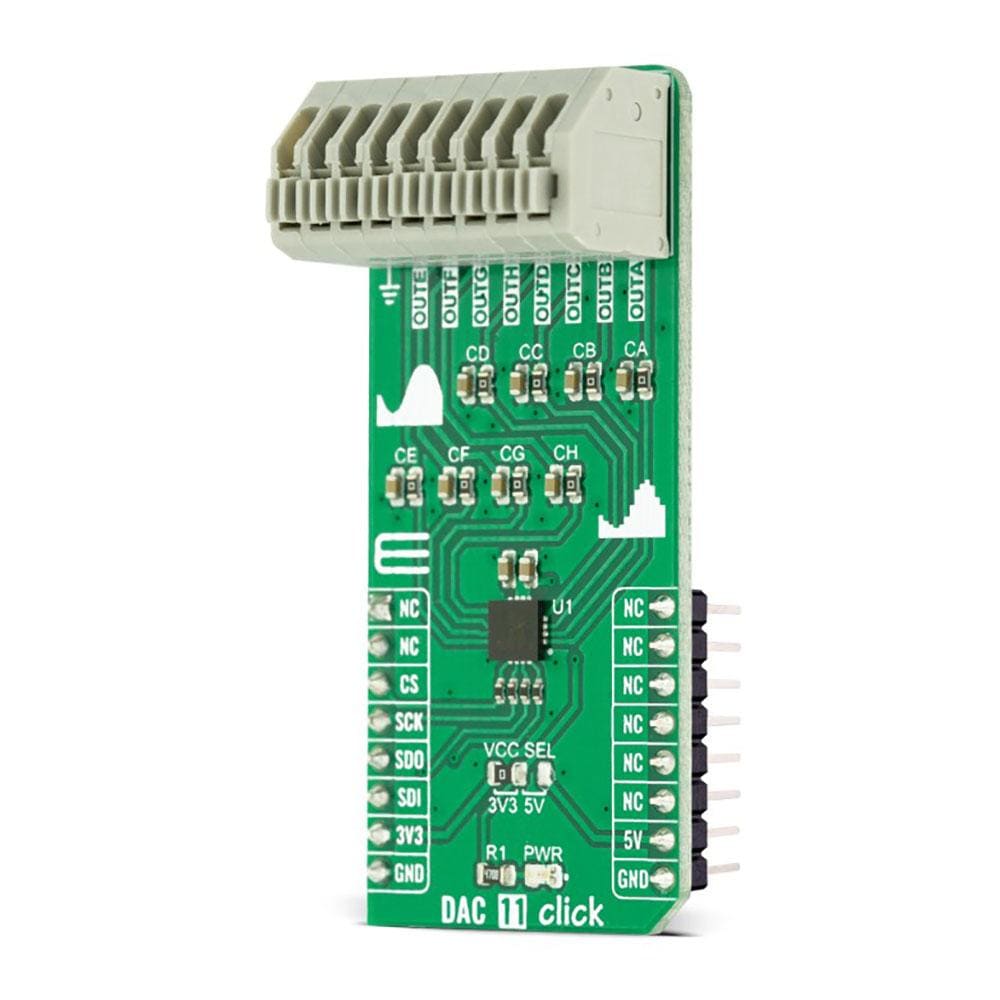
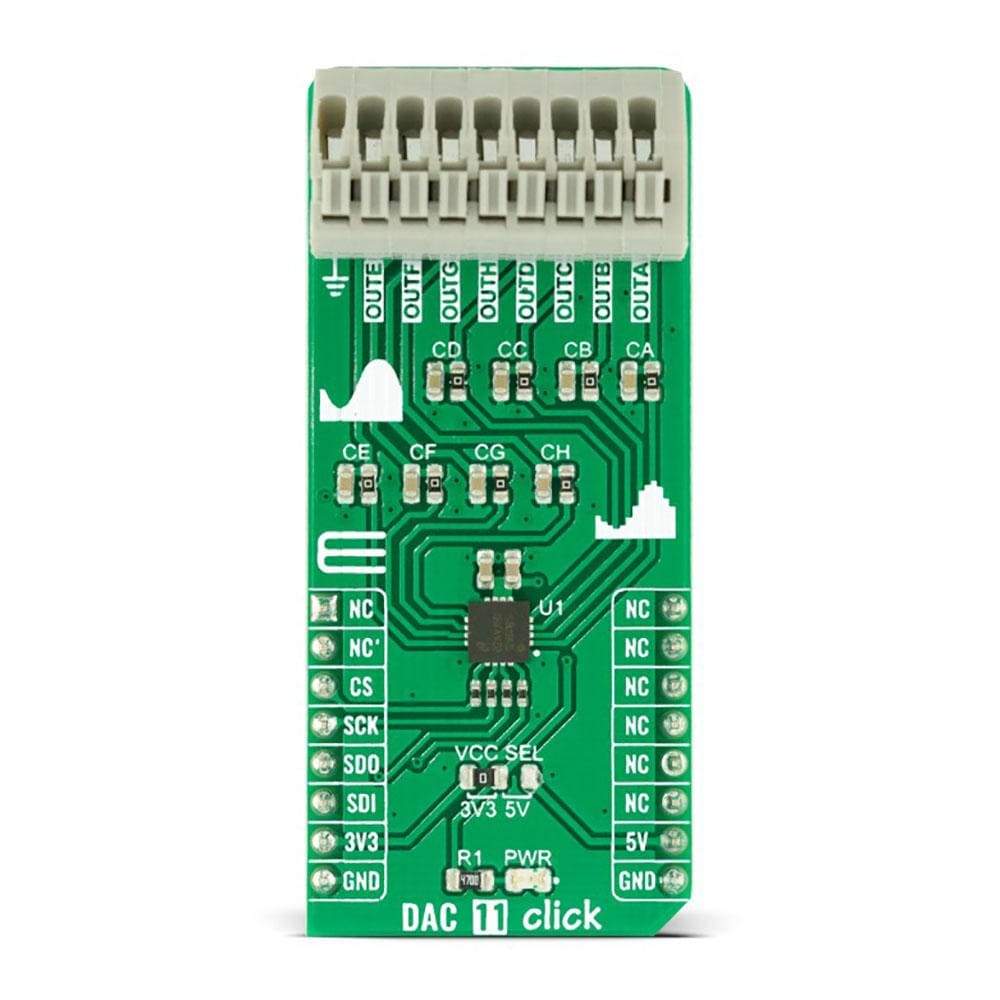
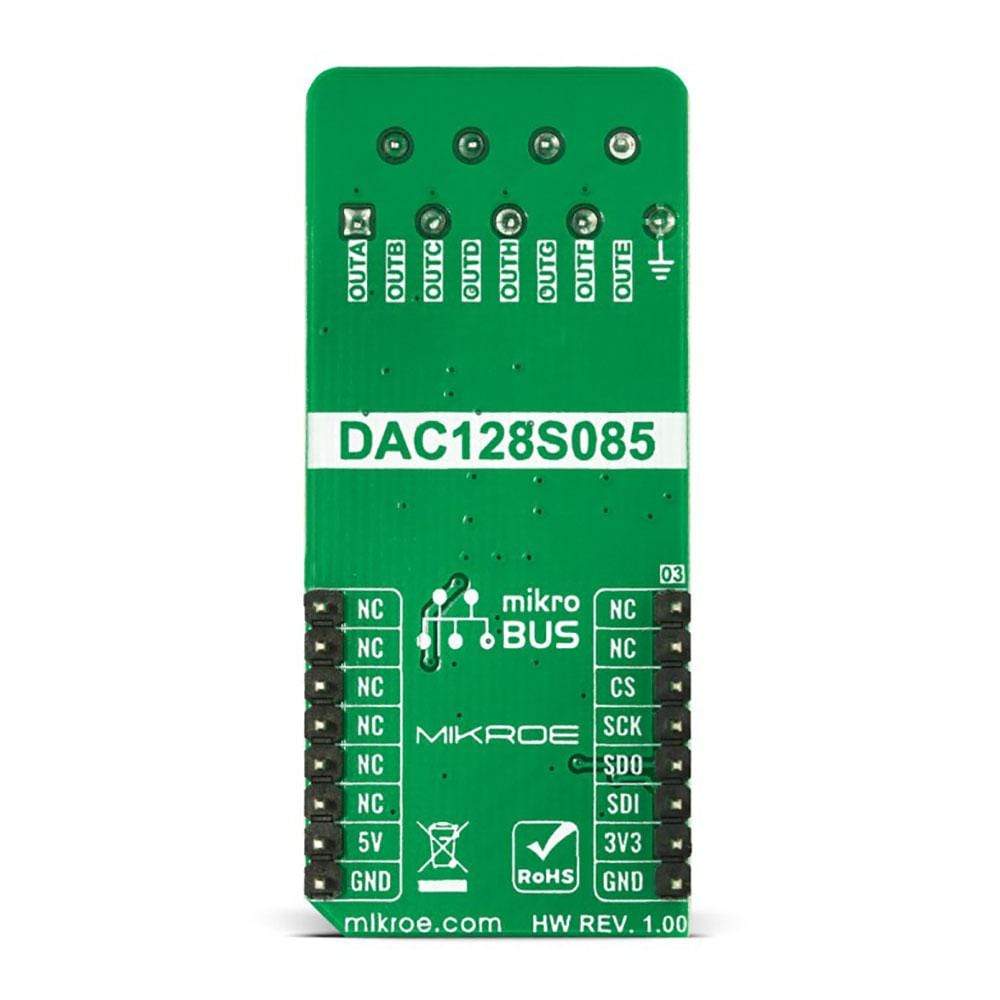

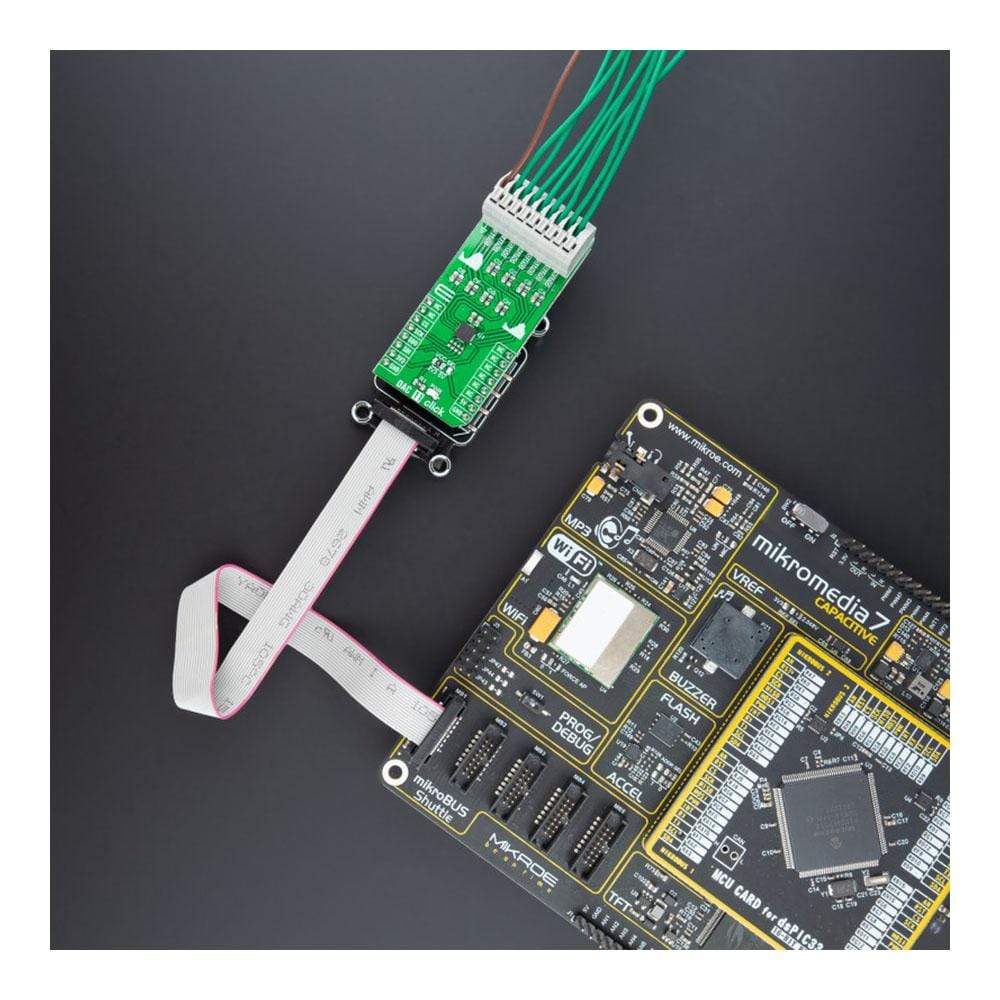
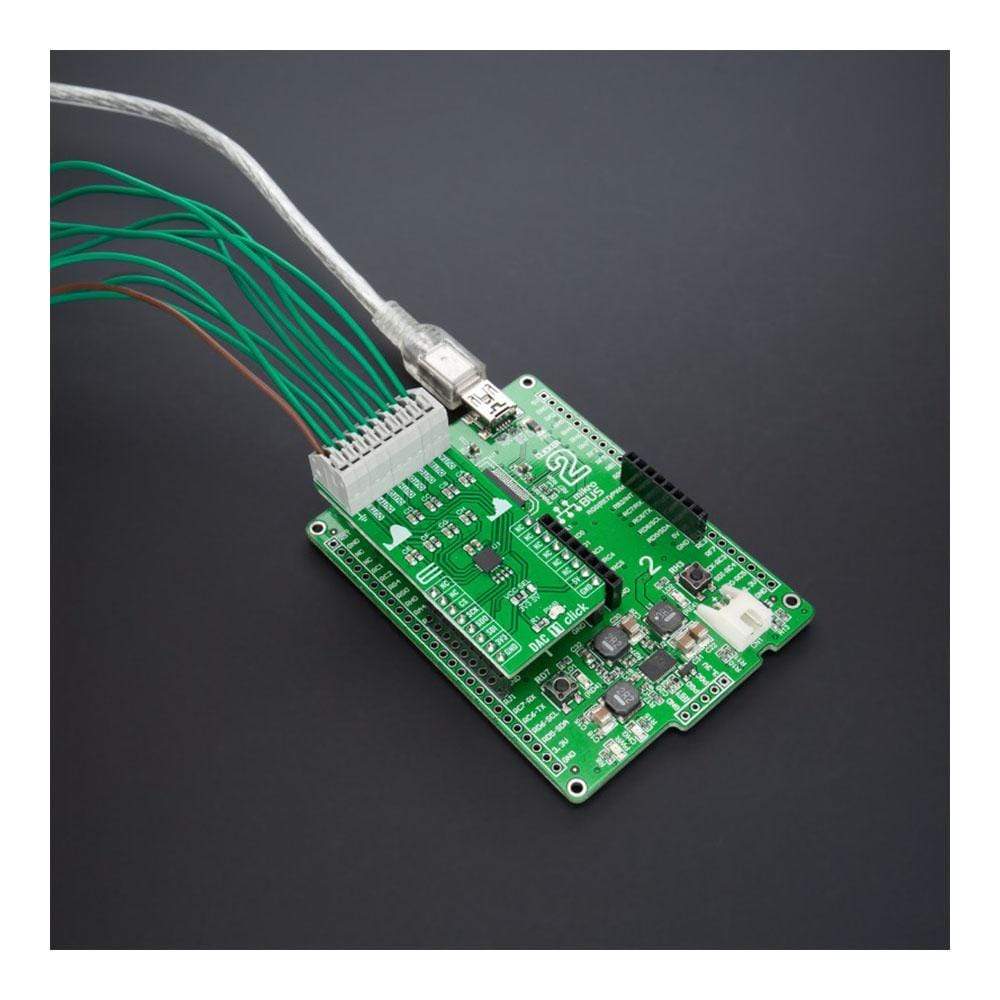
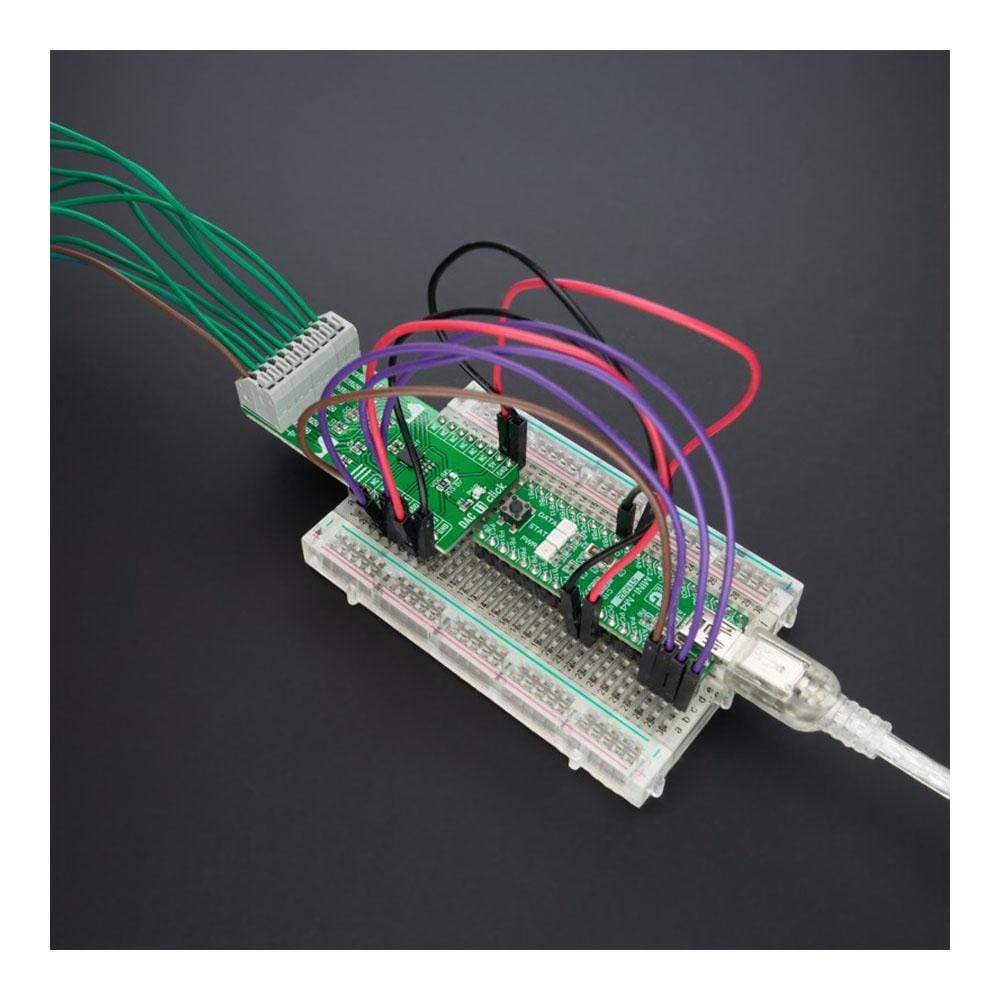
Key Features
Overview
The DAC 11 Click Board™ is a compact add-on board that contains a highly accurate digital-to-analogue converter. This board features the DAC128S085, a general-purpose OCTAL 12-bit analogue voltage-output DAC from Texas Instruments. It uses both logic voltage levels from the mikroBUS™ socket with a maximum power consumption of 4.85mW at 5V. The on-chip output amplifiers allow rail-to-rail output swing, supporting the SPI serial interface (compatible with standard QSPI, MICROWIRE, and DSP interfaces), which operates at clock rates up to 40MHz. This Click Board™ represents an excellent choice for digital gain and offset adjustment applications, programmable voltage and current sources, programmable reference, and many more.
The DAC 11 Click Board™ is supported by a mikroSDK compliant library, which includes functions that simplify software development. This Click Board™ comes as a fully tested product, ready to be used on a system equipped with the mikroBUS™ socket.
Downloads
Le Carte à clic DAC 11™ est une carte complémentaire compacte qui contient un convertisseur numérique-analogique de haute précision. Cette carte comprend le DAC128S085, un DAC analogique 12 bits OCTAL à usage général de Texas Instruments. Il utilise les deux niveaux de tension logique de la prise mikroBUS™ avec une consommation électrique maximale de 4,85 mW à 5 V. Les amplificateurs de sortie intégrés permettent une oscillation de sortie rail à rail, prenant en charge l'interface série SPI (compatible avec les interfaces QSPI, MICROWIRE et DSP standard), qui fonctionne à des fréquences d'horloge allant jusqu'à 40 MHz. Cette Click Board™ représente un excellent choix pour les applications de réglage de gain et de décalage numériques, les sources de tension et de courant programmables, la référence programmable et bien d'autres.
Le DAC 11 Click Board™ est pris en charge par une bibliothèque compatible mikroSDK, qui comprend des fonctions qui simplifient le développement logiciel. Cette Click Board™ est un produit entièrement testé, prêt à être utilisé sur un système équipé du socket mikroBUS™.
| General Information | |
|---|---|
Part Number (SKU) |
MIKROE-4767
|
Manufacturer |
|
| Physical and Mechanical | |
Weight |
0.02 kg
|
| Other | |
Country of Origin |
|
HS Code Customs Tariff code
|
|
EAN |
8606027383731
|
Warranty |
|
Frequently Asked Questions
Have a Question?
Be the first to ask a question about this.







